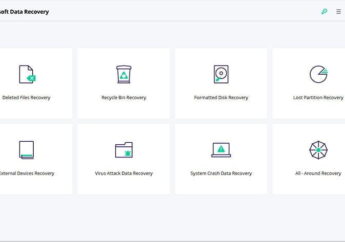Understanding Cloud Computing: Benefits And Best Practices
by Arnab Dey Technology Published on: 21 July 2023 Last Updated on: 26 July 2023

Cloud computing keeps revolutionizing how individuals, as well as businesses store, manage, and process data. With its flexibility, scalability, and cost-effectiveness, cloud computing has become integral to modern technology infrastructure.
This blog post aims to provide a comprehensive understanding of detailed cloud computing, exploring its benefits and highlighting best practices for users. Whether you are an individual or a local IT service provider seeking to harness the power of the cloud, this guide will equip you with valuable insights to make informed decisions and optimize your cloud computing experience.
Cloud Computing: What’s That About?
Being highly popular among users, cloud computing refers to delivering computing resources, including storage, servers, software, and databases, across the internet. Rather than depending on local infrastructure and physical servers, cloud computing paves the way for users to access the provided resources. One can use them remotely via a plethora of servers hosted by multiple cloud service providers.
Benefits of Cloud Computing
Cloud computing provides a handful of benefits that must be known before opting for it. So here are some of them:
Scalability and Flexibility:
Cloud computing provides the ability to scale resources up or down based on demand. Users can easily adjust storage, processing power, and software requirements to accommodate changing business needs.
Cost Savings:
By leveraging cloud computing, businesses can avoid upfront infrastructure costs and pay for only the resources they use. This pay-on-the-go model helps reduce operational expenses and provides cost predictability.
Collaboration And Accessibility:
Cloud computing helps a user to access its applications and data from anywhere via the Internet, promoting remote work and collaboration among team members.
Disaster Recovery and Data Backup:
Cloud service providers often offer robust data backup and disaster recovery solutions, ensuring that valuable data is protected and can be quickly restored during an incident.
Enhanced Security:
Service providers invest in advanced security measures, including data encryption, regular security updates, and stringent access controls, to safeguard user data from potential threats.
Cloud Computing Services Classifications
Do you know the most common categories of cloud computing services? If not, check out the next section of the article:
Infrastructure as a Service or IaaS:
Provides virtualized computing resources such as servers, storage, and networking infrastructure, allowing users to build their IT environments within the cloud.
Platform as a Service or PaaS:
Offers a platform for developers to build, test, and deploy applications without the need to manage the underlying infrastructure. PaaS provides tools, libraries, and development frameworks.
Software as a Service or SaaS:
Delivers software applications in and around the internet, eliminating the need for installation and maintenance on individual devices. Users can access the software through web browsers or dedicated client applications.
Best Practices for Cloud Computing Users
Users dealing with Cloud computing must optimize the best practices to get an optimum result. Check them out below:
Understand Data Storage and Security:
Evaluate the security measures your cloud service provider implemented and ensure they align with your data security requirements. Implement encryption, strong passwords, and multi-factor authentication for added protection.
Backup and Disaster Recovery:
Regularly back up your data and test the restoration process to ensure that your critical information can be recovered during data loss or system failure.
Monitor and Optimize Resource Usage:
Keep track of your resource consumption to optimize costs and ensure efficient utilization. Consider utilizing tools and services provided by your cloud service provider to monitor and analyze resource usage.
Data Governance and Compliance:
Understand the data governance policies and compliance requirements specific to your industry or region. Ensure your cloud service provider complies with applicable regulations and maintains data sovereignty.
Regularly Update and Patch Software:
Stay updated with software updates and security patches provided by your cloud service provider to mitigate vulnerabilities and ensure the latest security enhancements are in place.
Educate Users and Enforce Policies:
Educate your employees or users about cloud computing best practices, including password management, data access controls, and awareness of potential security threats. Enforce policies that align with your organization’s security and compliance requirements.
Conclusion
Cloud computing provides numerous benefits, including scalability, cost savings, accessibility, and enhanced security. By understanding the various cloud computing services available and implementing best practices, users can harness the full potential of the cloud while safeguarding their data and optimizing their operations.
Whether you are an individual or a business, adopting cloud computing can empower you to embrace the digital era, streamline processes, and focus on driving innovation. Embrace the power of the cloud, and leverage these best practices to maximize the benefits and ensure a secure and efficient cloud computing experience.
Read Also:
- Effective Steps toward Becoming a Hi-Flying Cloud Computing Expert
- How Cloud Computing Is A Game-Changer For The Businesses
- Important Features of Cloud Computing You Should Know!



































































































